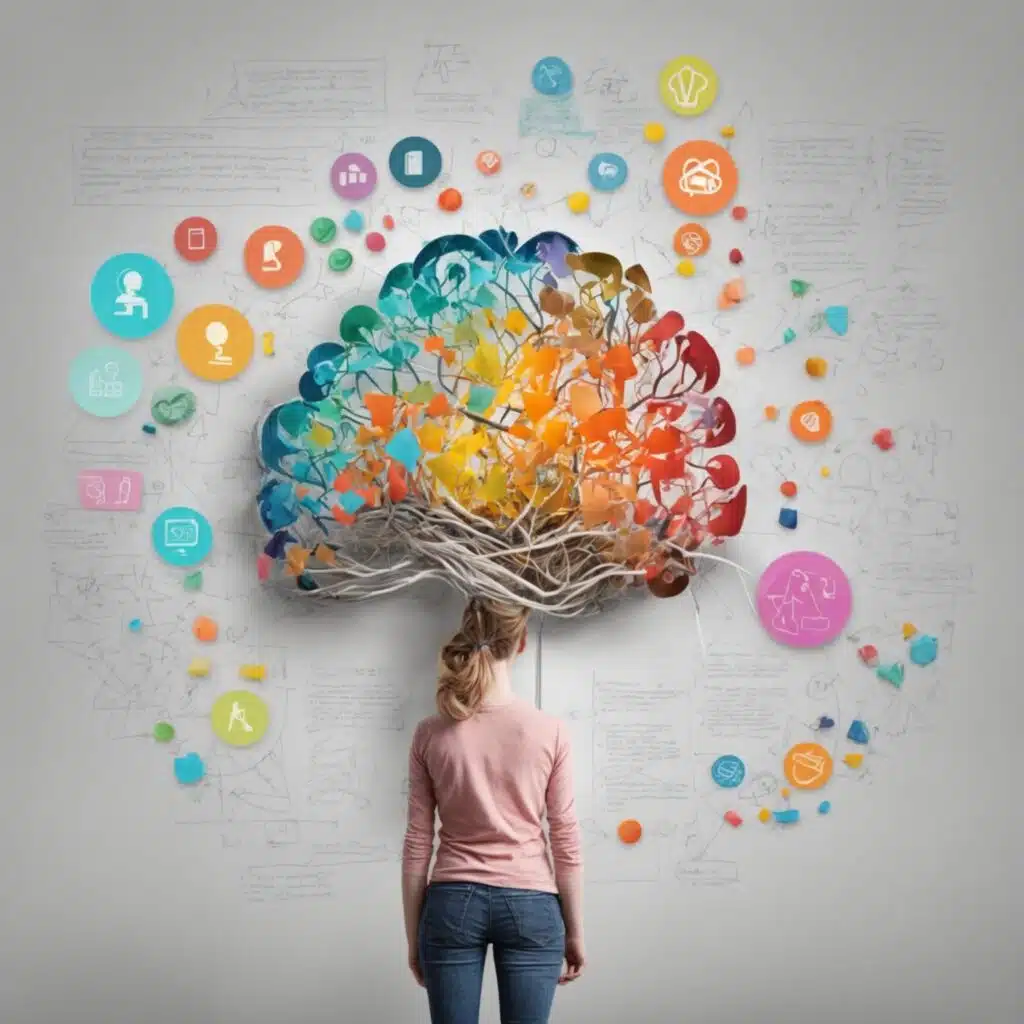
Neurodiversity and E-Learning: Designing Training Programs That Work
Introduction to Neurodiversity and E-Learning
What Is Neurodiversity and Why It Matters in Corporate Training
Neurodiversity, the recognition that people have different cognitive functioning styles, is becoming an essential focus for organizations aiming to create inclusive and effective working environments and training programs.
Take, for example, Lisa, a software design engineer, very intelligent woman who always manages to crack any problem, although breaks down in a traditional training environment. The usual ‘one-size-fits-all’ design on corporate learning is not her kind of learning style. Now take, for instance, the analyst Sam whose primary focus is numeric and qualitative analyses, who does well only when there are clear boundaries and is not so good when it comes to free form brainstorming sessions. These examples highlight an emerging trend that business leaders can no longer look away: neurodiversity.
Neurodiversity advocates a view that all cognitive functioning styles are equally valuable, though they may differ in how individuals learn, process, and engage with information and thus views all persons as equally competent but in diverse ways. Now that companies adopt neurodiversity, the demand for traditional training, as we know it today, increases. Also, it is not mere an issue of bringing in people because it is fashionable to do so, but rather making good use of the different kinds of skills to improve the advancement of the corporation.
Impact Analysis of Inclusive Training Programs
Microsoft’s Neurodiversity Hiring Program started in 2015 and has been inspired by neurodiversity, as they have emphasized autism hiring in their recruitment. During this program, potential employees are given a four-day skills session at the company’s Redmond Campus, where they are assessed in low-stress situations. After the organization hires them, employees work with job coaches and internal mentors who help them adapt and adjust to the workplace. This has resulted in increased employee productivity and retention, even among individuals without neurodivergence, fostering cross-team collaboration and enhanced problem-solving.
Likewise, the program referred to as SAP Autism at Work, which became operational in 2013, has also shown positive effects. Their systematic e-learning and training programs allow employees to work at a greater speed following the completion of the programs, leading to improved productivity for the organization.
Furthermore, according to Deloitte, companies with an inclusive culture have twice the chances of achieving their financial targets. There is evidence that neurodiverse teams outperform teams with no neurodiverse members in some criteria, showing a 30% improvement in problem-solving efficiency.
This indicates the benefits of using inclusive e-learning strategies that address the needs of neurodiverse employees, ultimately improving business productivity, innovation, and growth.

E-Learning That Has Considered Neurodivergent People
Looking back at the content and design of neurodivergent-friendly e-learning courses developed during the custom design phase, a significant obstacle was the standardization in corporate education. Conventional strategies treat the audience as a single group, delivering the same message in the same form, regardless of individual differences. Such a “one size fits all” approach has emerged more from societal norms than from accommodating the diverse needs of all learners, particularly those who are neurodivergent.
“A viable way to tackle this challenge is Universal Design for Learning (UDL). In fact, UDL is a highly sensitive design tool that enables consideration of all possible learning styles. UDL promotes multiple means of representation: how the material is presented; means of engagement: how learners actively participate with the content; and means of expression: how learners show what they know. For instance, e-learning may incorporate a combination of video materials, audio, interactivity, and reading elements to offer different approaches to learning content and various strategies for retention. A great example for UDL implementation is London Intercultural Academy, implementing UDL helped address different learning styles and increased the amount of content accessible to a broader audience, including learners who are not neurotypical. Implementing UDL has helped us achieve high completion and retention rates with our employee training courses”.
Strategies for Solving Standardization Barriers Using UDL:
- ⦿ Multimodal Changes for Content : Include a combination of text, audio, and visuals in tasks or user actions to facilitate learning from diverse constituents.
- ⦿ Flexible Engagement Options: Allow learners to engage with the material in different ways and at their own pace by including options such as self-paced modules, gamified materials, and collaborative tasks.
- ⦿ Customized Assessment Methods: Let students respond in writing, complete projects using computer programs, create videos, or engage in other non-standard tasks that showcase their understanding.
By establishing UDL principles in e-learning systems, organizations can create a conducive work environment that supports the neurodiverse workforce in terms of how they learn and where their learning strengths lie.
Dr. Hala Elminiawi emphasizes that there should be equity in addition to accommodation. This addresses the difference between providing general equal opportunity and offering equitable assistance. In training programs, equal opportunity can mean providing every individual with the same quantity of resources, whereas equity refers to giving each person sufficient and appropriate diverse resources that will enable them to work effectively in their specific ways.
Equity in e-learning means understanding that some neurodivergent learners may need adjustments in the order or types of content included in the learning process, or even in the way learners are expected to demonstrate what they have learned. It’s not about lowering standards; rather, it’s about ensuring that the same end results are upheld through different approaches. For instance, one learner may excel in written assessments, while another may perform better when assessments include activities with visuals or kinesthetic elements. This flexibility accommodates the needs of all learners, including those who face challenges due to cognitive differences.
The provision of support for all learners within a training program extends beyond simple accommodations for those who may struggle. It involves structuring the program so that every learner can engage successfully and reach their maximal potential.
Incorporating Neurodiversity into E-Learning: As one of the pioneers in neurodiversity, Dr. Thomas Armstrong argues that e-learning technologies should be harnessed to address the problem of inclusion without compelling neurodiverse individuals to conform to the non-disabled majority. Instead of urging everyone to fit into the box of the ‘non-disabled majority,’ Armstrong calls for the provision of learning environments that accept all neurological types so that each person can excel in their own way. This highlights the need to develop structures that emphasize allowing neurodiverse learners to excel by building on their strengths rather than imposing limitations on them.
This depicts a major shift—from questioning why neurodiverse people should be integrated to asking how this integration can work. Modern companies do not attempt to adapt existing structures for such learners; they create e-learning systems that can accommodate multiple learner profiles simultaneously.
AI is increasingly being employed in e-learning to facilitate customized learning paths for students through dynamically changing content and task complexity based on their performance. These systems create dynamically updated learning environments that are learner-centric.
Furthermore, since VR can simulate events as they would occur in real life, it enhances learning environments and provides a more personal experience, allowing learners to practice subjects that are difficult to grasp. Therefore, the fusion of these technologies into e-learning is not the end of the horizon but rather the beginning.
Future Outlook and Trends
In conclusion it can be said that the future holds positive positivity for both AI and neurodiversity simultaneously. AI-driven platforms like LIA use machine learning algorithms to suggest content based on learners’ progress, and immersive VR training is already being used in industries like healthcare and manufacturing .. If VR technology can mimic any learning environment, then, in principle, the same technology can help the neurodiverse individual to find that environment within which he or she performs best.
It is probable that companies will become more data-driven in designing the training programs in consideration of the emerging technologies. It is possible that scenario-playing and machine learning algorithms directing the learners to more suitable training programs could become an order of the day, thereby making the trainings more engaging.
The Practicality and Value of Neurodiverse E-Learning
An inclusive and neurodiversity inclusive e-learning journey is equally a tall order and an attractive proposition. The main lesson for decision-makers in business is that adopting neuro-diversity in training is not just about being favourable to all, it is greater than that: it is practical. Because the power of different brains can lead organisations to new levels of productivity and creativity.
So, what do you plan to do next? First, assess the present training programs with respect to accommodation. Add the construct of versatile modules and real-time dynamic changes. Consider building an environment where neurodiversity is regarded an added value, not some exception. In this way, you will not only be getting ready for the coming whirlwind-you will be creating it.
Courageous leaders today appreciate that the most effective and agile organizations are those that appreciate and embrace the different types of diversity that exist within. Thanks to intelligent design and planning, e-learning will not be left behind in this great fair movement.
